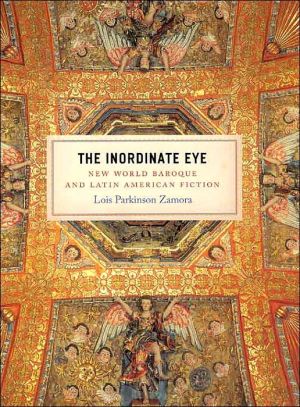

 |

|

The average rating for The Inordinate Eye: New World Baroque and Latin American Fiction based on 2 reviews is 3.5 stars.
Review # 1 was written on 2011-05-15 00:00:00 Johnny Bravvo Johnny BravvoThis is a collection of pairing, of art (mostly from the 16th and 17th centuries) and literature (mostly from the 1940s and beyond) that works towards building a kind of understanding about what, really, makes up the Neobaroque. Dr. Zamora is largely successful in the ways that she uses close readings of the fiction as well as close considerations of the artworks, along with a number of art and literary historians and theorists, to put together her categorizations. Where this fails, however, is largely in the way of approach. You see, Latin American Neobaroque is simply Latin American Postmodernism. This however, is a lable that Zamora despises and goes out of her way in order to refute. Unfortunately, it seems to me that the refutation is largely ignorant of much of postmodernism and focuses its beam too narrowly on the postmodernism of the 1960s United States (particularly that being composed by white men) and fails to realize the scope of the movement through both Western and Eastern Europe as well as other places such as India and Japan (to say the least) and how firmly her ideas of a non-white and mestizo culture rejecting "white" culture by incorporating it ironically falls withing these other art forms. Interestingly she also invents her own (mildly anemic) form of contrapuntal analyses, though she is ignorant of Said's book that speaks of the idea, which carries the book through. Which is to say that this is an excellent book that is soft in a few areas and ignorant in others (which would be fine if it weren't striving against them), but can be forgiven its faults for the good it does and the quality of its analysis. |
Review # 2 was written on 2012-11-06 00:00:00 James Markham James MarkhamClaude Lévi-Strauss' The Way of the Masks was interesting for the most part. I'm an indigenous person, Tsimshian from the north coast of British Columbia, but I live on the south coast where the masks he analyzes come from. The book is almost entirely about trying to understand the deep meaning of the unusual-looking Sxwayxwey* mask of the Coast Salish, by referring to the origin myths, dances and costumes associated with it. A large part of the book attempts to clarify this by contrasting and comparing it with the Tsonoqua mask which is associated with several tribal groups from various parts of coastal British Columbia. He weaves a huge matrix of elements of the masks, the dance costumes, the dances, the origin myths, related myths, and only kind-of-sort-of related myths. Lévi-Strauss was the creator and proponent of structural anthropology, which I know nothing about. As far as I can tell, what he does is cherry-pick tenuous connections from innumerable possible aspects of these myths and masks until they 'prove' the connections he is looking for. E.g., if I say "this is black" and you say "this is white" the fact that we say the opposite proves that we're saying the same thing. In this sense, it reminds me of other 'just-so' pseudo-sciences like psychoanalysis. What I enjoyed, then, were the many illustrations (some in colour) and the recounting of many, many myths. I've always especially enjoyed all kinds of Tsonoqua stories. The rest of it is all very nice for Claude Lévi-Strauss, but he can keep it. * There are probably a dozen ways of spelling this in Romanised form, but this comes close to the phonetic sound. Ditto for Tsonoqua. |
CAN'T FIND WHAT YOU'RE LOOKING FOR? CLICK HERE!!!